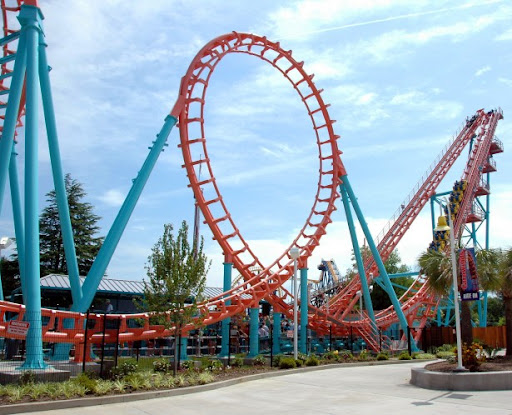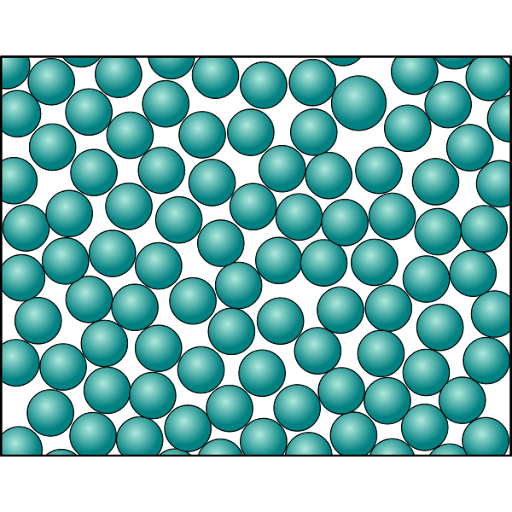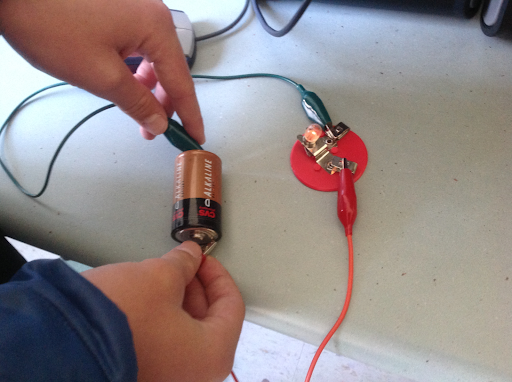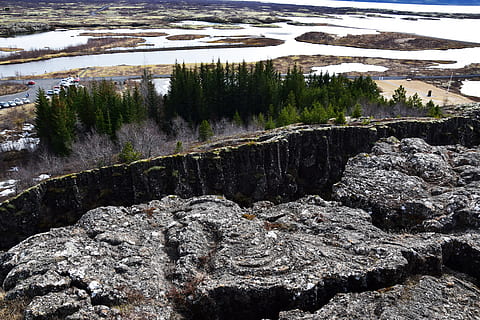Essential Questions: How can energy be transformed? How can energy cause matter to transform?
| Quarter 1 | Quarter 2 | Quarter 3 | Quarter 4 | ||
|---|---|---|---|---|---|
|
Unit Title and Quarter |
Force, Motion, Energy: |
Matter: |
Electricity: |
Sound and Light: Wow! |
Earth’s Structures: |
|
Image Cue |
 |
 |
 |
 |
|
|
Focus of the Story |
Roller coasters and F-18s move fast, but how? We start our year by exploring how forces transfer energy and what happens to an object’s motion when multiple forces act upon it. We ask questions, investigate, and analyze data to make sense of motion. |
What exactly is matter, and what happens to it when it’s combined or heated? Next we take a look at a microscopic level to investigate this question of how matter is mixed and how energy transforms it. We use what we learn to solve real-world problems. |
We now know what energy is, but how can it be transformed into electricity so that we can use it? Next we explore the relationships between electricity, energy, and magnetism and then consider how to use our data to find creative solutions to problems. |
Sound and light seem so very different, but are they? Next we investigate the ways sound and light travel in waves as energy. Then, we use what we know to determine how sound and light can help us do work and solve problems. |
Is Earth’s energy really causing the ground we stand on every day to change? We end our year by looking at models of how Earth’s internal energy impacts Earth’s structures. We then predict how we might reduce the impact of those changes. |
|
Transfer goals |
Ask questions driven by curiosity on a given event or process in the natural world based on observations or data. Plan and carry out investigations or use a design process to answer a question or solve a problem. Analyze and interpret data to determine its validity or usefulness, identify patterns and relationships, and/or draw conclusions. |
Communicate results, solutions, or findings to inspire further inquiry and courses of action. Define problems through research into what is already known and think creatively about what solutions might be possible. Plan and carry out investigations or use a design process to answer a question or solve a problem. |
Define problems through research into what is already known and think creatively about what solutions might be possible. Communicate results, solutions, or findings to inspire further inquiry and courses of action. Analyze and interpret data to determine its validity or usefulness, identify patterns and relationships, and/or draw conclusions. |
Ask questions driven by curiosity on a given event or process in the natural world based on observations or data. Plan and carry out investigations or use a design process to answer a question or solve a problem. Analyze and interpret data to determine its validity or usefulness, identify patterns and relationships, and/or draw conclusions. |
Communicate results, solutions, or findings to inspire further inquiry and courses of action. |
|
Learning Targets |
I can ask questions about how energy works through forces to move objects. I can plan and conduct an experiment to determine the effects of the net force acting on an object. I can collect and interpret data related to force and the motion of objects. |
I can construct a simple model to show that matter is composed of atoms. I can solve a problem by designing a process to separate two or more types of matter within a mixture. I can use data to show what happens when energy causes a phase change. |
I can explain the relationship between energy, electricity, and magnetism. I can design a solution to a problem using what I know about electricity and electromagnets. I can use data to determine solutions for conserving energy. |
I can identify ways that sound and light are similar and different. I can use a design process to solve a problem using what I know about sound and light. I can use observations and data to support conclusions about how sound and light travel. |
I can use models to show the structure of Earth and how Earth’s crust moves and changes. I can classify rocks based on how they were formed. I can describe the relationship between Earth’s energy and the forces which cause change on Earth’s surfaces. |
|
Demo of Learning |
Design an amusement park ride using what you know about forces |
Investigate whether salt really works to melt ice on sidewalks |
Use data to understand energy usage at your school and design a solution to conserve energy |
Design an appealing instrument that will reflect and refract the stage lights and will produce different pitches |
Present a variety of evidence and models to show that energy can be transformed or cause matter to transform |

